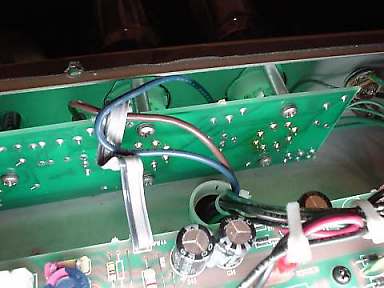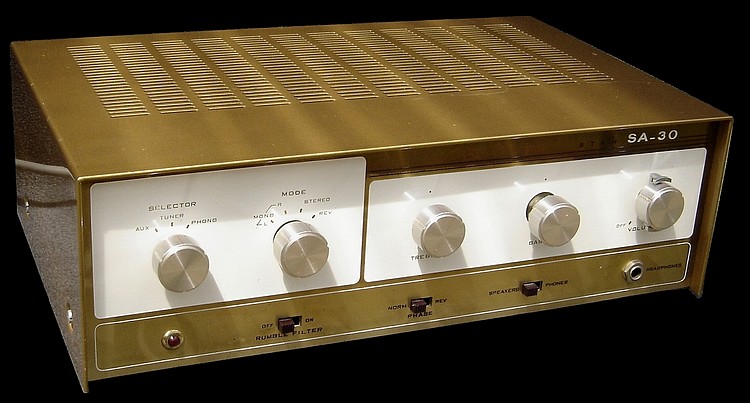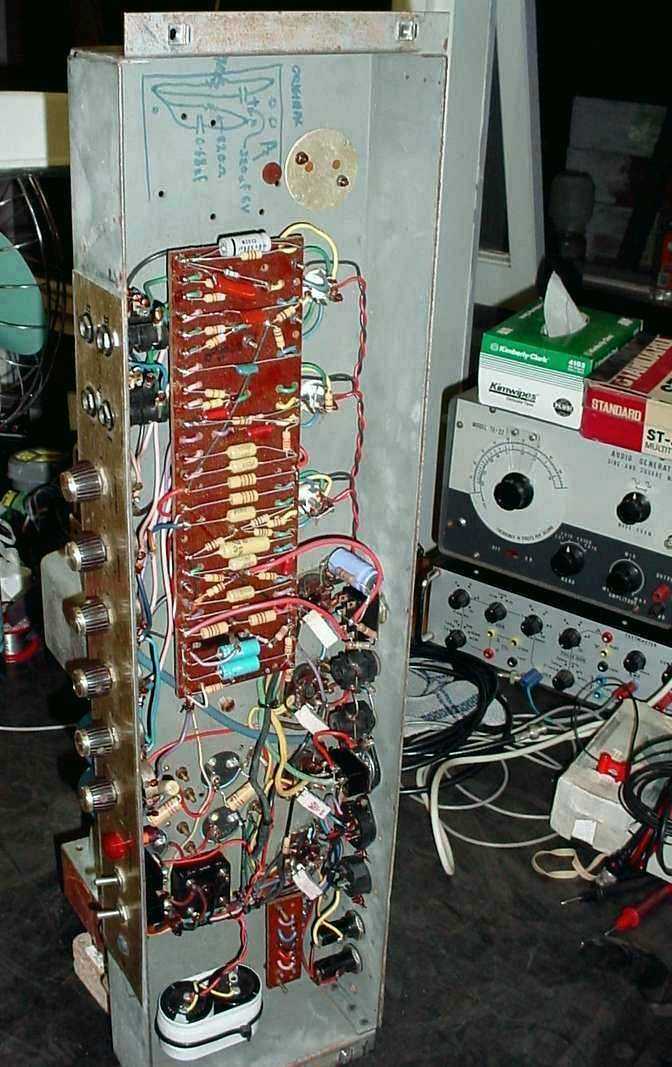Guitars of Love
Valve amp maintenance
|
Modern construction vs old fashioned point to point wiring? Most contemporary guitar amps use modern printed circuit boards for the basis of the electronics. This has many advantages over old hand soldered techniques. It enables more features such as electronically controlled channel switching and on board effects. Although it looks very neat and professional, it can usher in problems. Components mounted on PCBs have very little scope for movement induced by the high intensity vibrations and large thermal swings produced in valve amps. At right is a section the chassis of a typical modern Fender unit. It has channel switching by way of relays, and two levels of overdrive making it very versatile volume and situation wise, and a very effective reverb. Although brand new, it has already blown the output valves as a result of poor connections to the base pins, necessitating re-soldering and replacement of the 6L6GCs. Although It offers more consistency over it's all valve predecessors, having the power valves on a rigid PCB is a silly approach.
I currently work in a music college which buys a lot of new valve amps and I have to say that the reliability of these units has not impressed me at all. We have had several failures and the repair cost can be huge for boutique style guitar amps. A major failure can easily write off a modern valve amp due to the PCB construction. An electronic fault in an amp using surface mount PCB technology can render the amp unrepairable to any practical degree. Recently the power transformer which shorted out in a Mesa Boogie Express 50 watt cost $700 for the part alone! The old beige tollex Fender Concert amp featured on this website is 50 Y.O. and fires up perfectly. It has had 1 x resistor replaced in it's entire life! It doesn't get used all that often thesedays but I cannot imagine today's products going that distance. The whole idea of disposable electronics has no appeal for me. I like simple clunky things that go and go, and if they stop, can be fixed for two bob. |
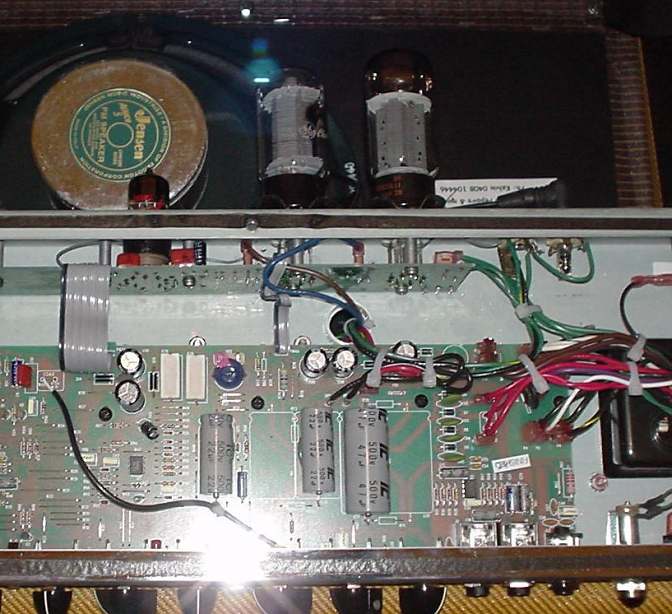 |
|
At right is an example of point to point wiring in the old 1960s Star SA-30 below. 40 years on and not a single bad solder joint.
|
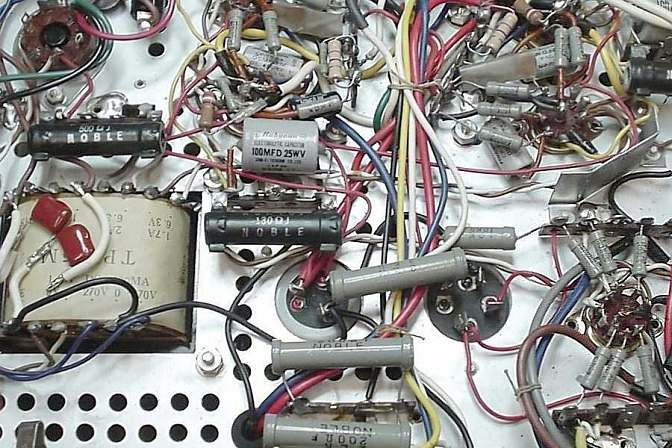 |
|
Retro Valve:- Why do valve amps sound so much better than solid state ones for guitar amplification? In a nutshell, it's to do with the characteristics of the valve; the design of the circuit; and electromechanical interface which occurs between the valves, the transformer and the speakers. Here's the definitive research paper in original form written in 1973 by Russell O'Hamm. For a faster download, I also have the html version here. |
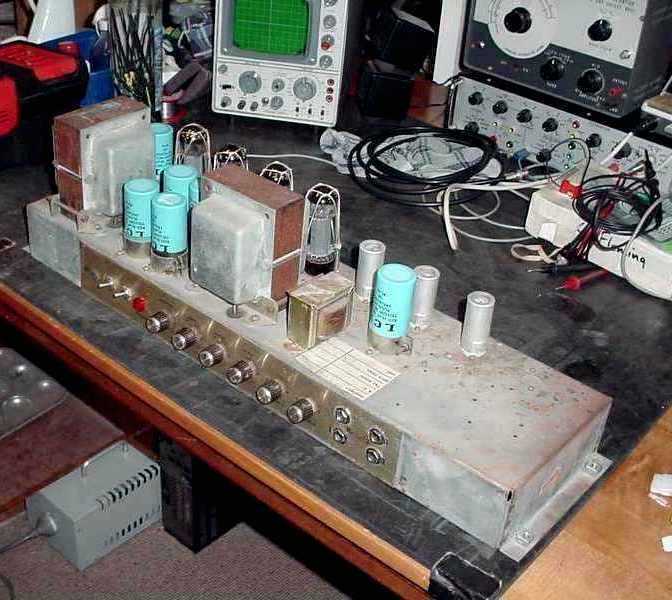
|
|
I have found that most modern guitar amps are less serviceable than those of old. Probably the most sensible type of wiring for a valve guitar amp is the mounted tag board as seen in this old Marshall. It allows easy replacement of parts and keeps the valve sockets decoupled from the components. This type of construction is now offered at the high end with Fender's reissue Tolex covered vintage series for example, which use a black pitch sheet embedded with studs to take the components.
In the picture at right, at the bottom of the chassis you can see extra filtration for the HT DC supply. When these amps were built, electrolytic capacitors were very expensive and their capacity was small. It is easy to upgrade the capacity from (typically) 47 uF to 220 - 460 uFwith moderate cost. Because most guitar amps use little or no negative feedback, PS hum finds it's way into the music signal at high levels. In Australia which uses 50Hz mains supply, the resultant harmonic artifacts are diabolical when combined with concert pitch sounds.
|
|
